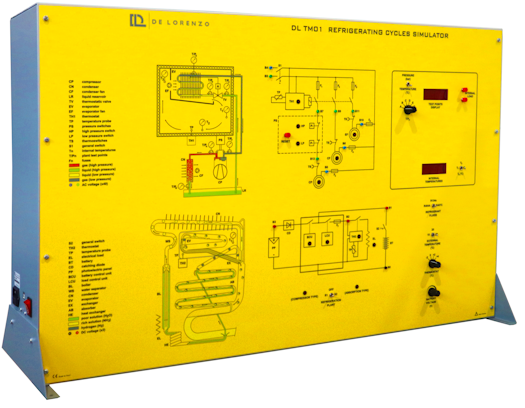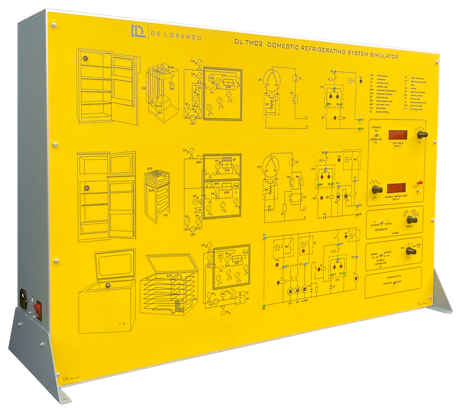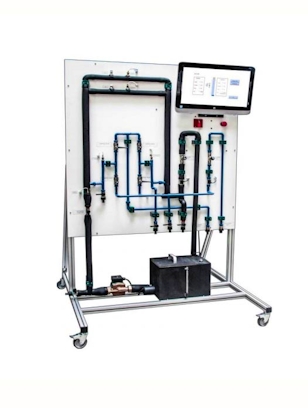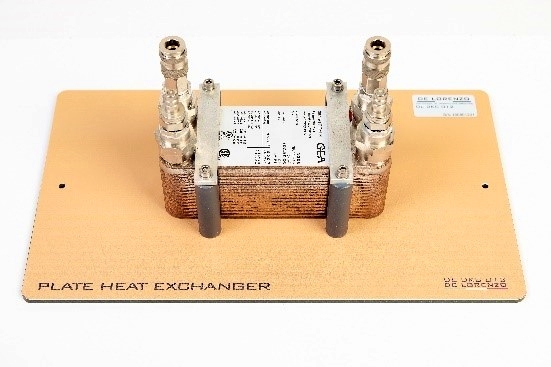THERMOTRONICS (HVAC) Training Systems
THERMOTRONICS (HVAC) Training Systems
Thermotronics refers to the didactic systems intended for studying thermomechanics, that is, the equipment dedicated to producing, transmitting, and using both domestic and industrial heat. Our Thermotronics laboratories study topics related to cooling cycles, air conditioning, heating, and sanitary water production systems. De Lorenzo is always at the forefront and has developed environments and solutions for training and equipment for students to be trained theoretically and experimentally and to develop their professional skills inherent to thermomechanics. Each line of our products addresses study content from its study program, practices, and fault simulation systems. At De Lorenzo, we manufacture quality, flexible, and educational systems for the development of skills of professionals in the 21st century.
AIR CONDITIONING Training Systems
It is the process of treating the air conditioning of inhabited spaces; it consists of regulating the conditions in terms of temperature (heating or cooling), humidity, cleaning (renovation, filtering), and air movement within the spaces of use. Both industrial and domestic systems can be autonomous and centralized. Our systems for air conditioning study will allow students to develop the skills necessary for selecting, designing, operating, and maintaining air conditioning systems. Therefore, our modules have interconnected theories and practices that enable students to learn gradually and teachers to plan their courses.
AIR-CONDITIONING SYSTEM

DL TM05
MIXED AIR-CONDITIONING SYSTEM

DL TM06
DOMESTIC AIR‐CONDITIONING SYSTEMS

DL TM07
HEAT PUMP AIR-CONDITIONING SYSTEM

DL TM08
INTRODUCTION TO THE AIR CONDITIONING SYSTEMS

DL TM33
SPLIT TYPE AIR CONDITIONER TRAINING SYSTEM

DL TMAC10
DIDACTIC SYSTEM FOR THE STUDY OF ENERGY EFFICIENCY IN HVAC SYSTEMS

DL CLIMA-6
DIDACTIC SYSTEM FOR THE STUDY AND TRAINING IN REFRIGERATION AND AIR CONDITIONING WITH REVERSE…

DL CNSPLI-KT
REFRIGERATING CYCLES SIMULATOR

DL TM01
DOMESTIC REFRIGERATING SYSTEMS

DL TM02
REFRIGERATING UNIT FOR FOOD DISTRIBUTION

DL TM03
INDUSTRIAL COLD STORE

DL TM04
INDUSTRIAL REFRIGERATING SYSTEMS

DL TM32
COLD ROOM

DL DKF011

DL DKC031
REFRIGERATION AND AIR CONDITIONING TRAINING SYSTEM

DL TMAC11
The sun is an extremely powerful energy source that often functions as storage. The heating system is the process of setting the temperature of an enclosed space in order to provide comfort to its occupants. Heating is the largest energy expenditure in the world, therefore, the reduction in the energy used for heating represents the most effective way to contribute to the resolution of environmental problems. A form of heating is currently known as central or indirect heating and consists in the conversion of energy from an external or internal source on the site that needs to be heated. The resulting heat is transmitted to the site through a fluid medium such as air, water or steam. De Lorenzo has designed different simulators and demonstrators to cover this field. The educational goal of each of the didactic systems that we offer for this line is for students to know and understand the operation of the devices, the general specifications of their systems, maintenance and control characteristics
HEATING SYSTEMS

DL TM09
SANITARY WATER PRODUCTION SYSTEMS

DL TM10
PHOTOVOLTAIC AND THERMAL PANELS

DL TM11
SOLAR THERMAL HOME PLANT SIMULATOR

DL TM12
SOLAR THERMAL ENERGY TRAINER

DL THERMO-A1
SOLAR THERMAL ENERGY TRAINER

DL THERMO-A2
SOLAR THERMAL ENERGY TRAINER

DL THERMO-A12
SOLAR THERMAL ENERGY TRAINER

DL THERMO-A3
GEOTHERMAL ENERGY TRAINER

DL GEOTHERM
HEAT TRANSFER Training Systems
We call heat transfer, thermal transfer, or heat transmission the physical phenomena from which heat spreads from one medium to another. This occurs when two systems of different temperatures come into contact, allowing the flow of energy from the highest concentration (in this case of higher temperature) to the lowest concentration point until reaching a thermal equilibrium, in which they equalize temperatures. There are three mechanisms of heat transfer: conduction, convection, and radiation. There is conduction within a body or between two bodies in contact. Convection depends on the movement of a mass from one region of space to another. Radiation is heat transfer by electromagnetic radiation, like sunlight, without there having to be any matter in the space between the bodies. De Lorenzo has designed different simulators and demonstrators to cover this field. The educational goal of each of the didactic systems we offer for this line is for students to know and understand the operation of the devices, the general specifications of their systems, maintenance and control characteristics.
HEAT TRANSFER BY NATURAL AND FORCED CONVECTION

DL DKT032S
HEAT TRANSFER IN CONCENTRIC TUBES

DL DKC071
HEAT EXCHANGERS

DL DKC011
PLATE HEAT EXCHANGER

DL DKC012
SHELL AND TUBE HEAT EXCHANGER

DL DKC013
TUBULAR HEAT EXCHANGER

DL DKC014
JACKETED VESSEL WITH STIRRER AND COIL HEAT EXCHANGER

DL DKC015
WATER COOLING TOWER

DL DKC021
TYPE A COOLING TOWER

DL DKC022
TYPE B COOLING TOWER

DL DKC023
TYPE C COOLING TOWER

DL DKC024
TYPE D COOLING TOWER

DL DKC025
TYPE E COOLING TOWER
